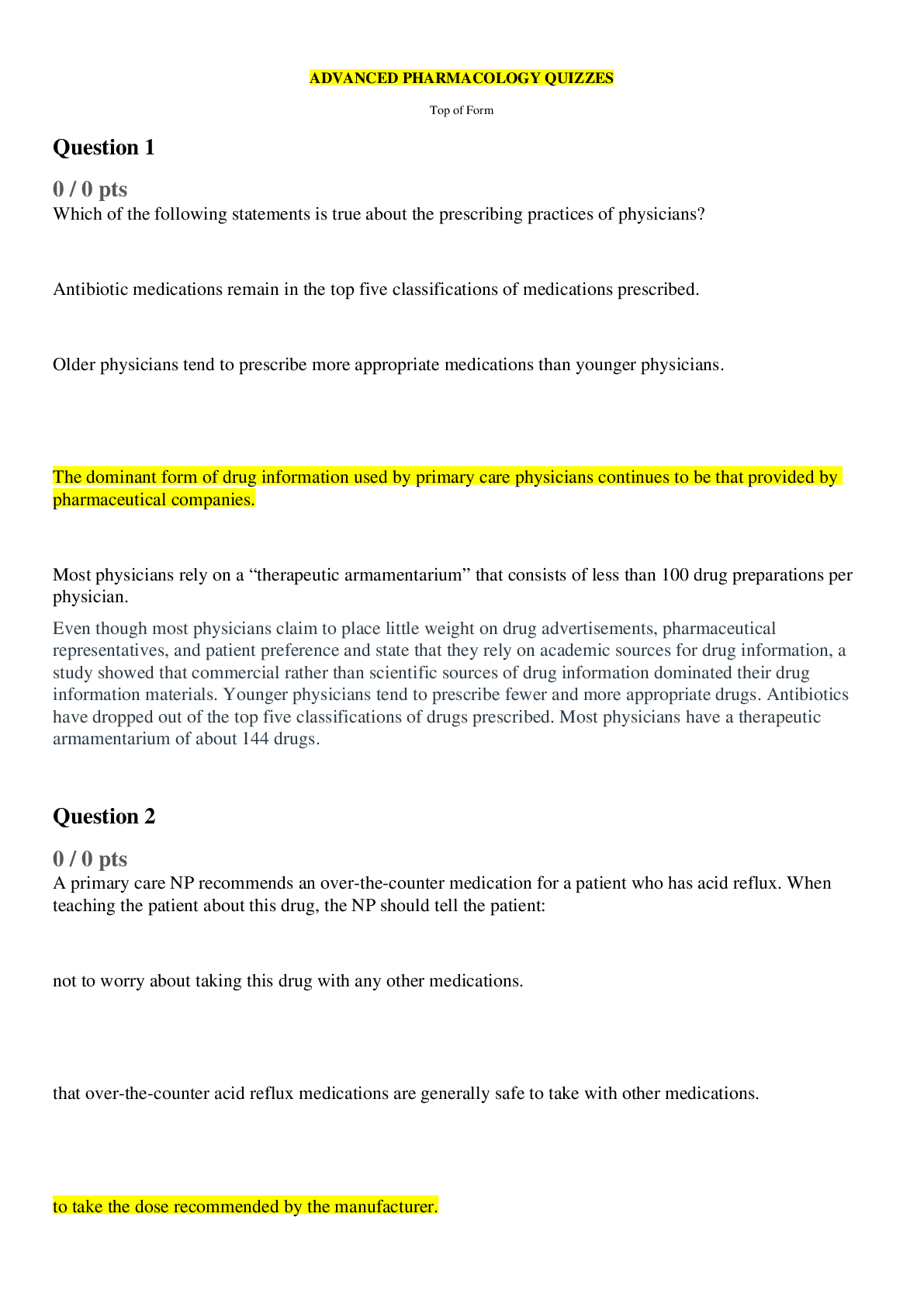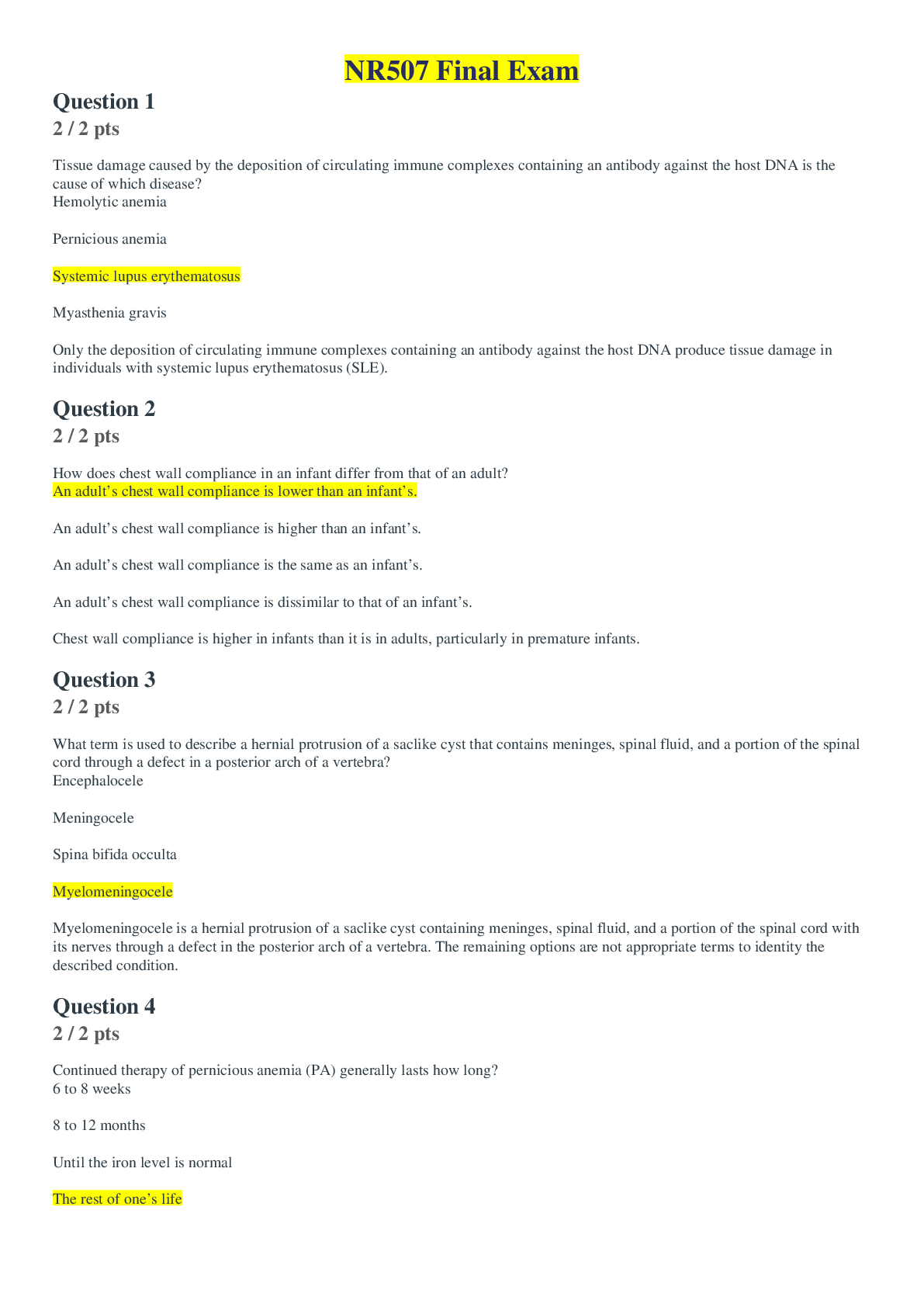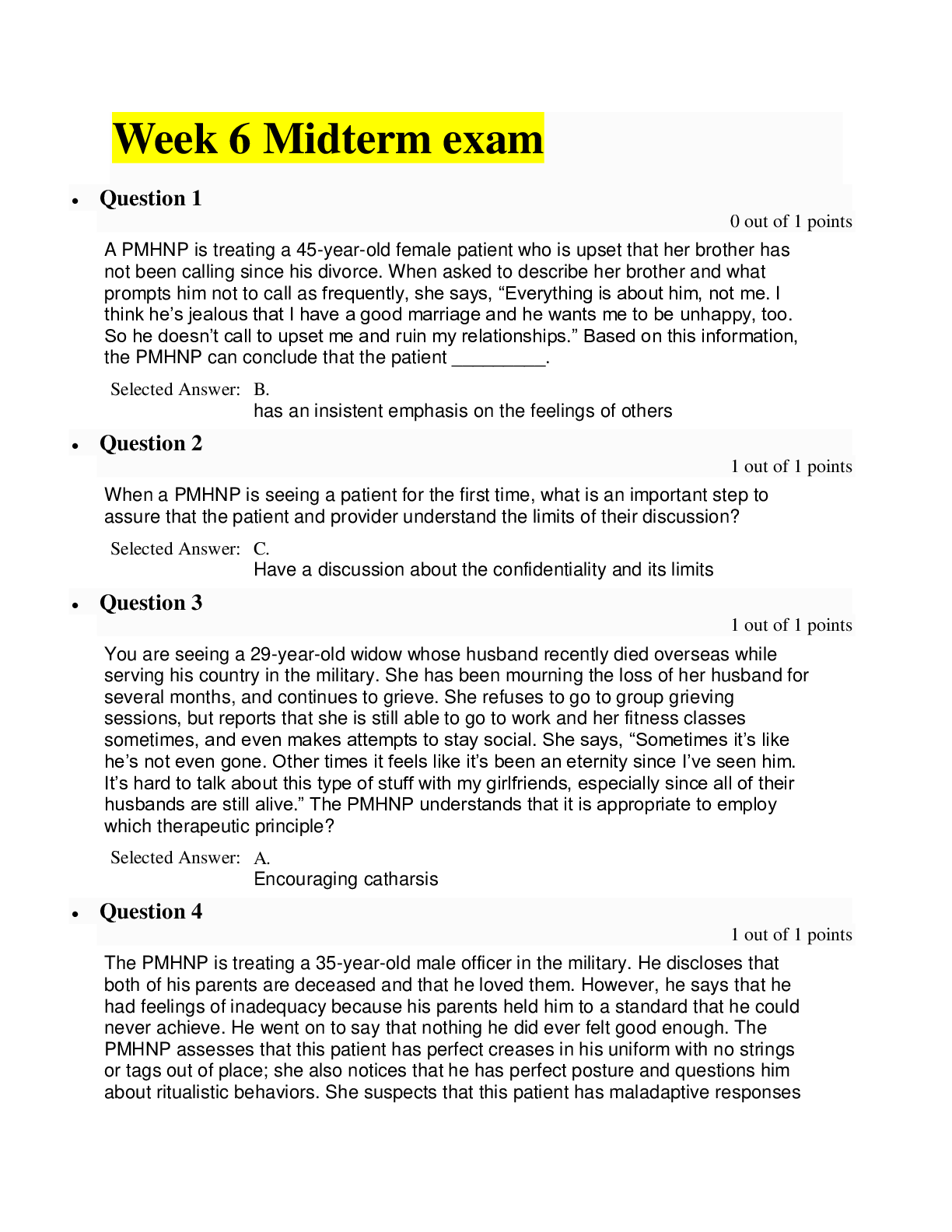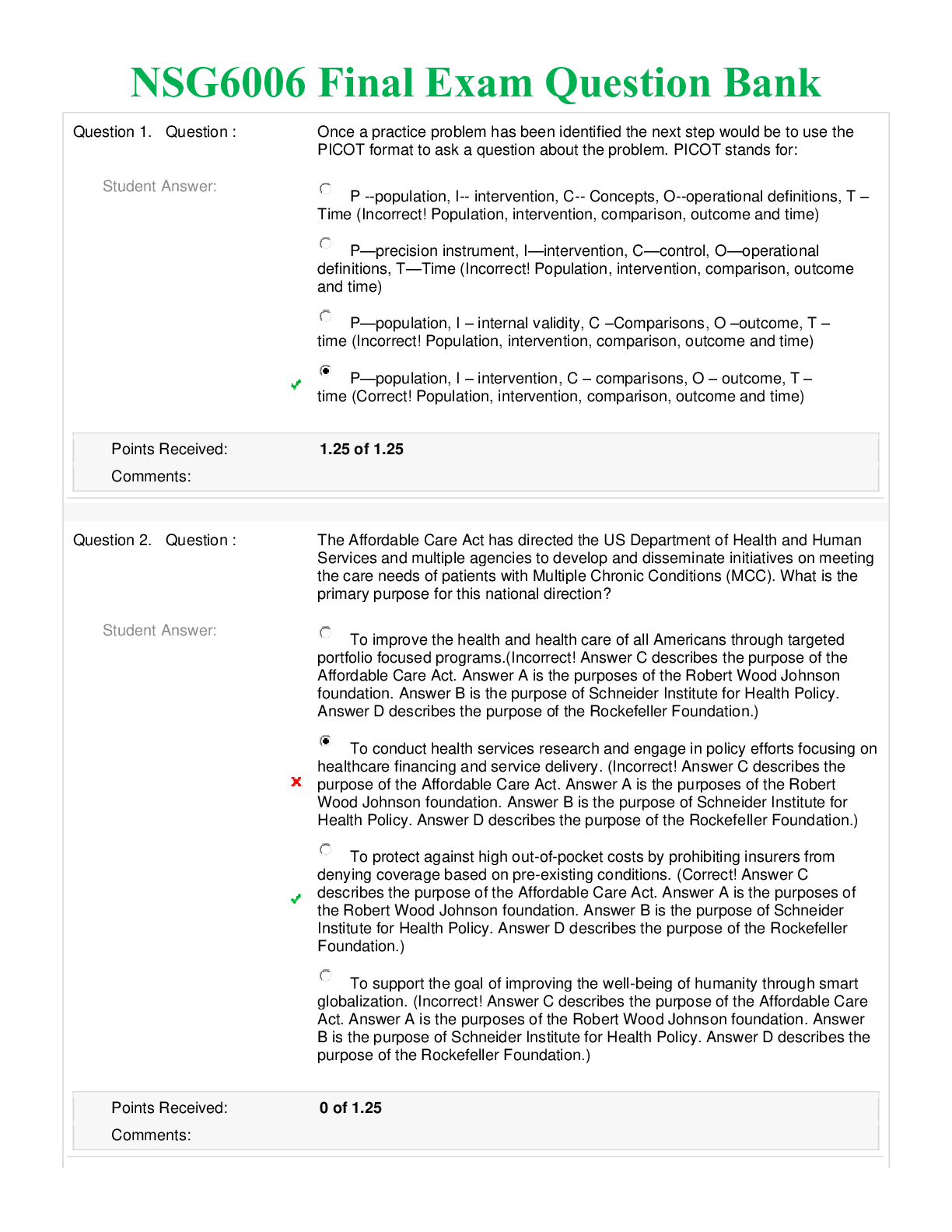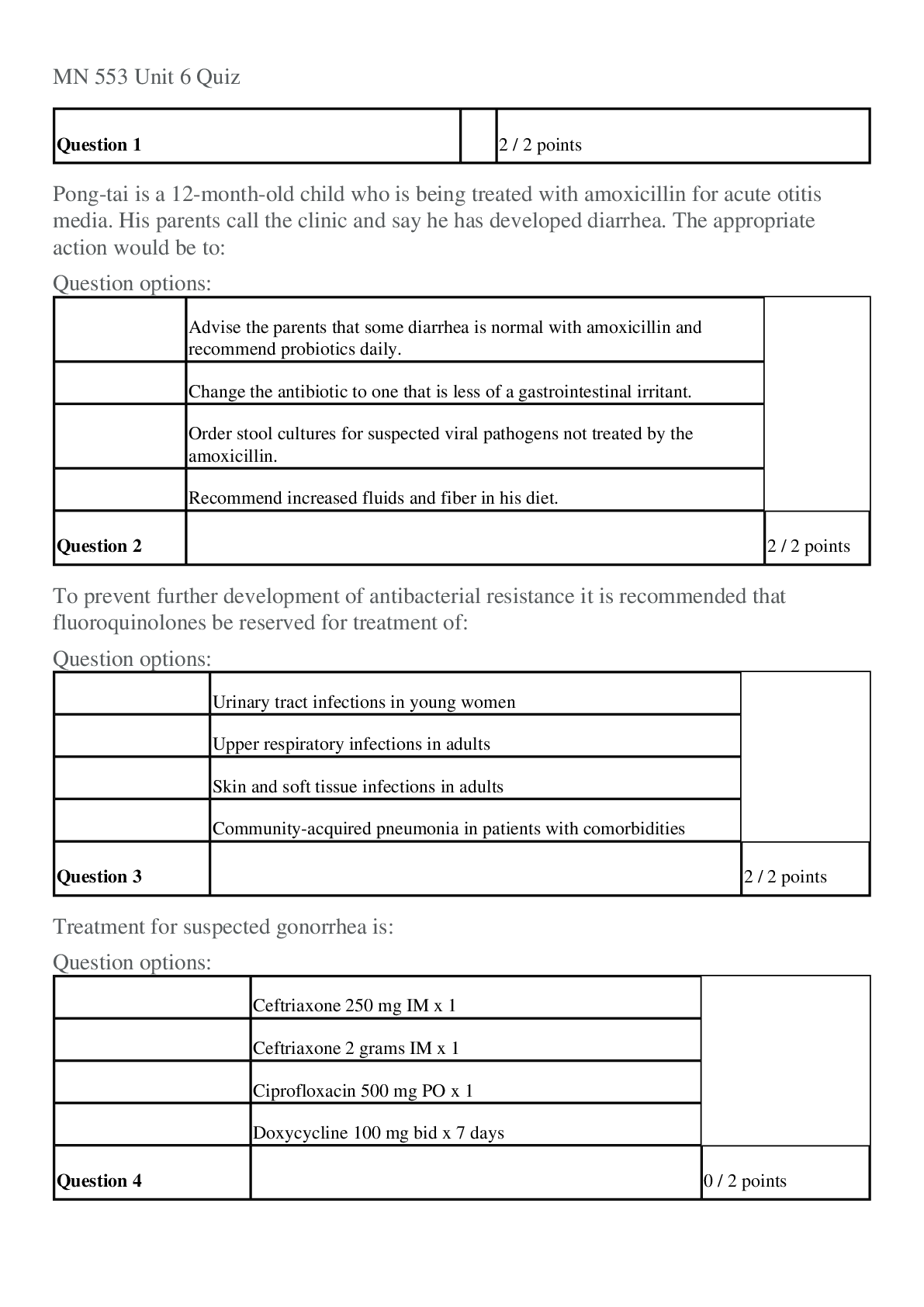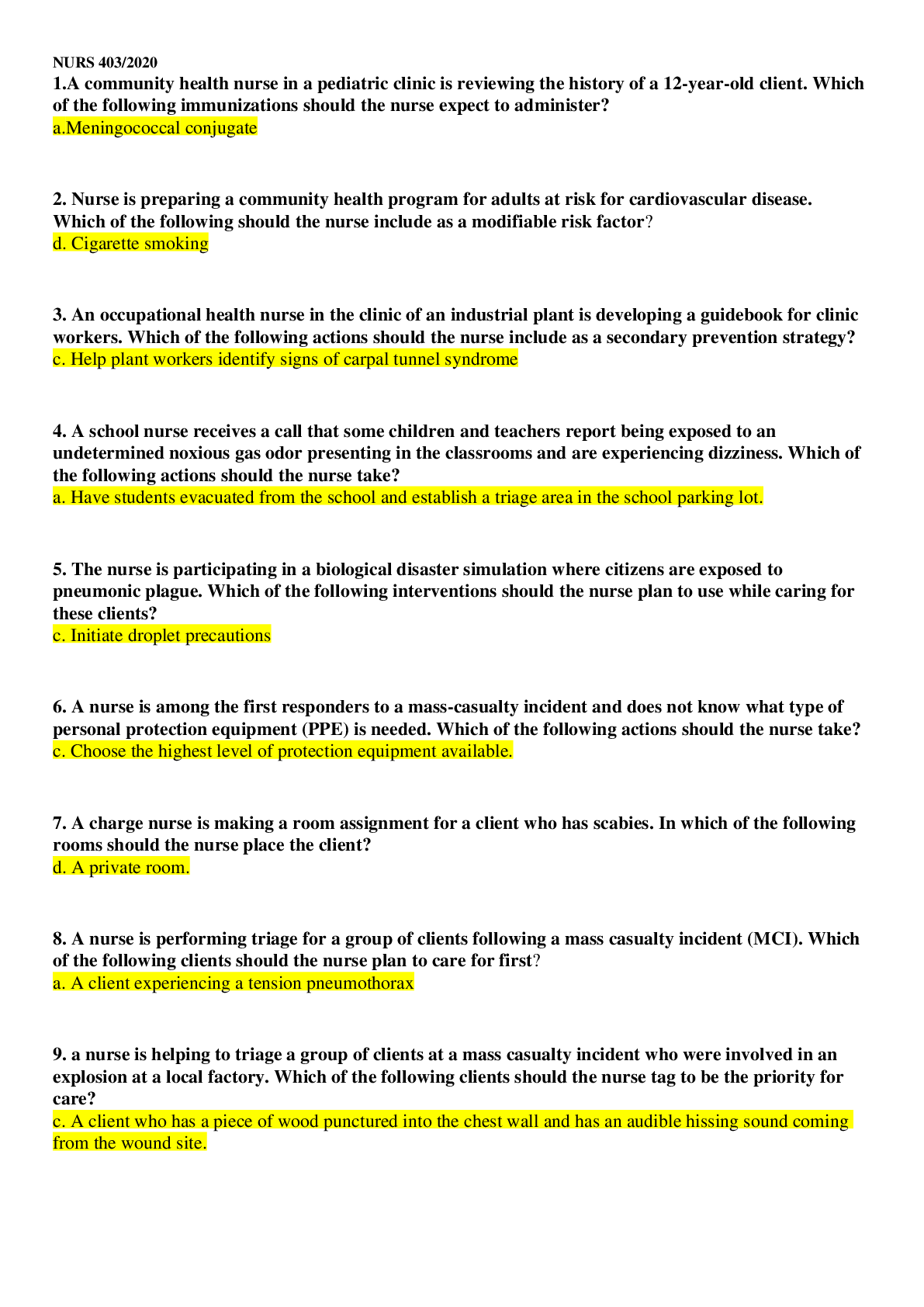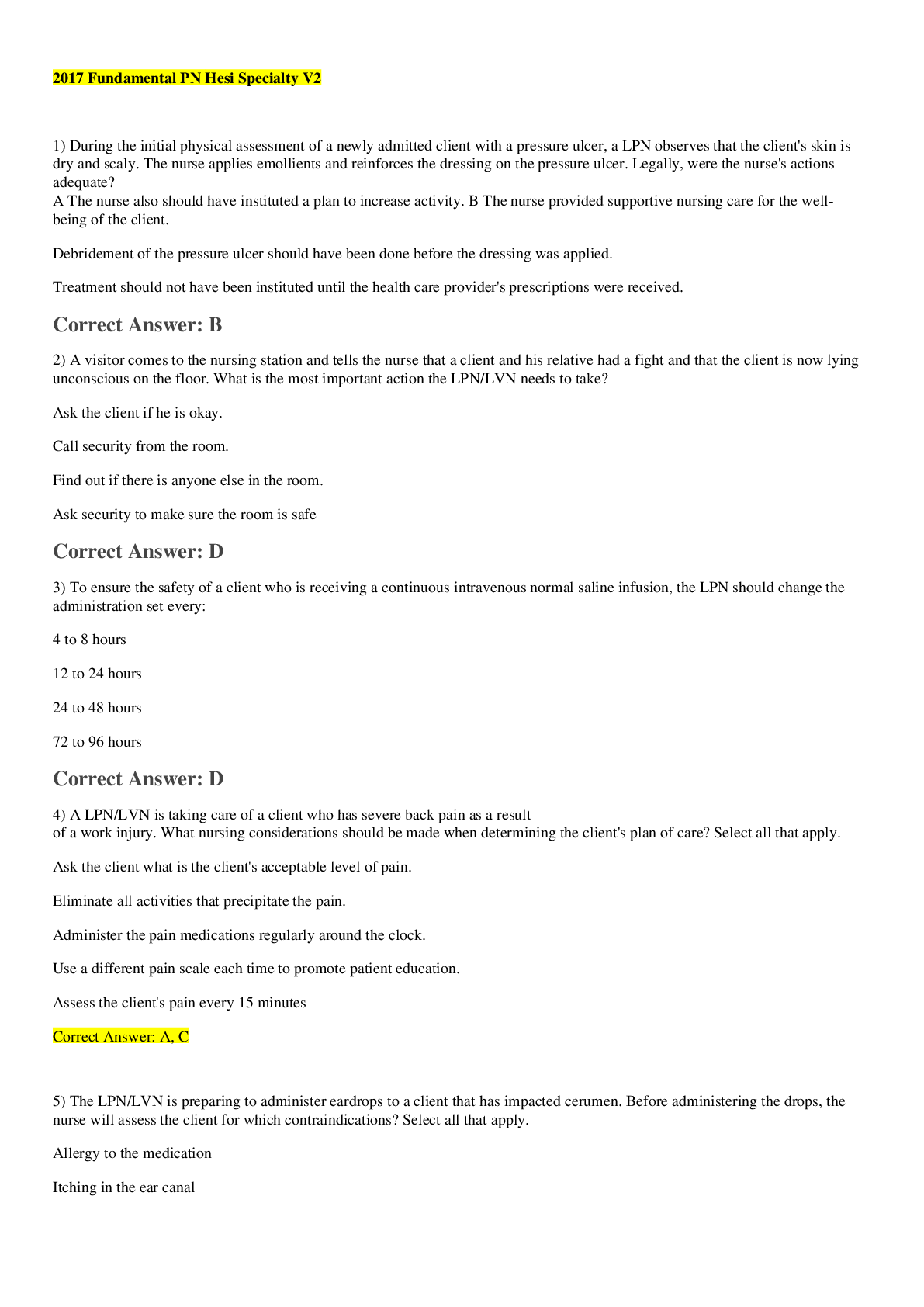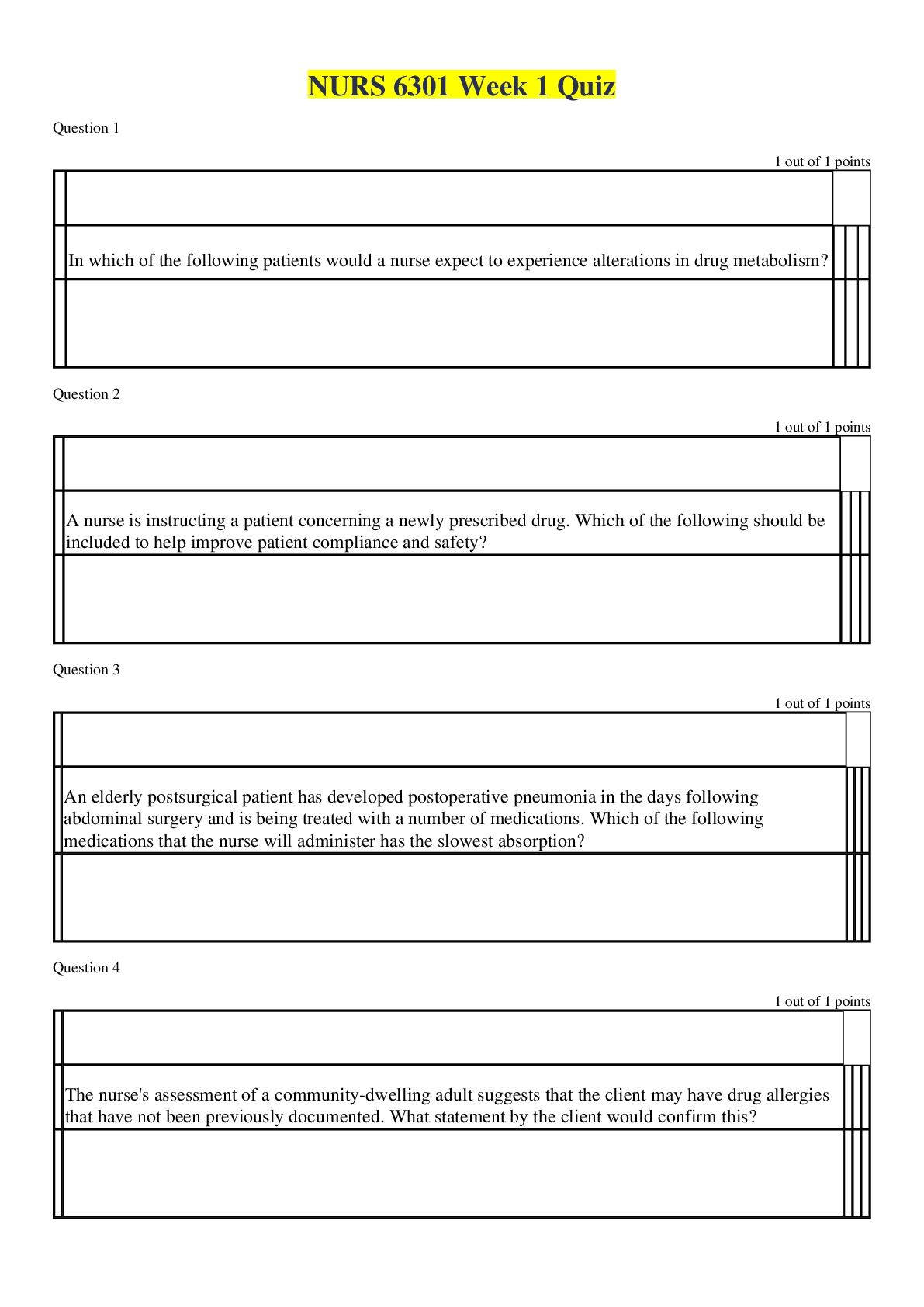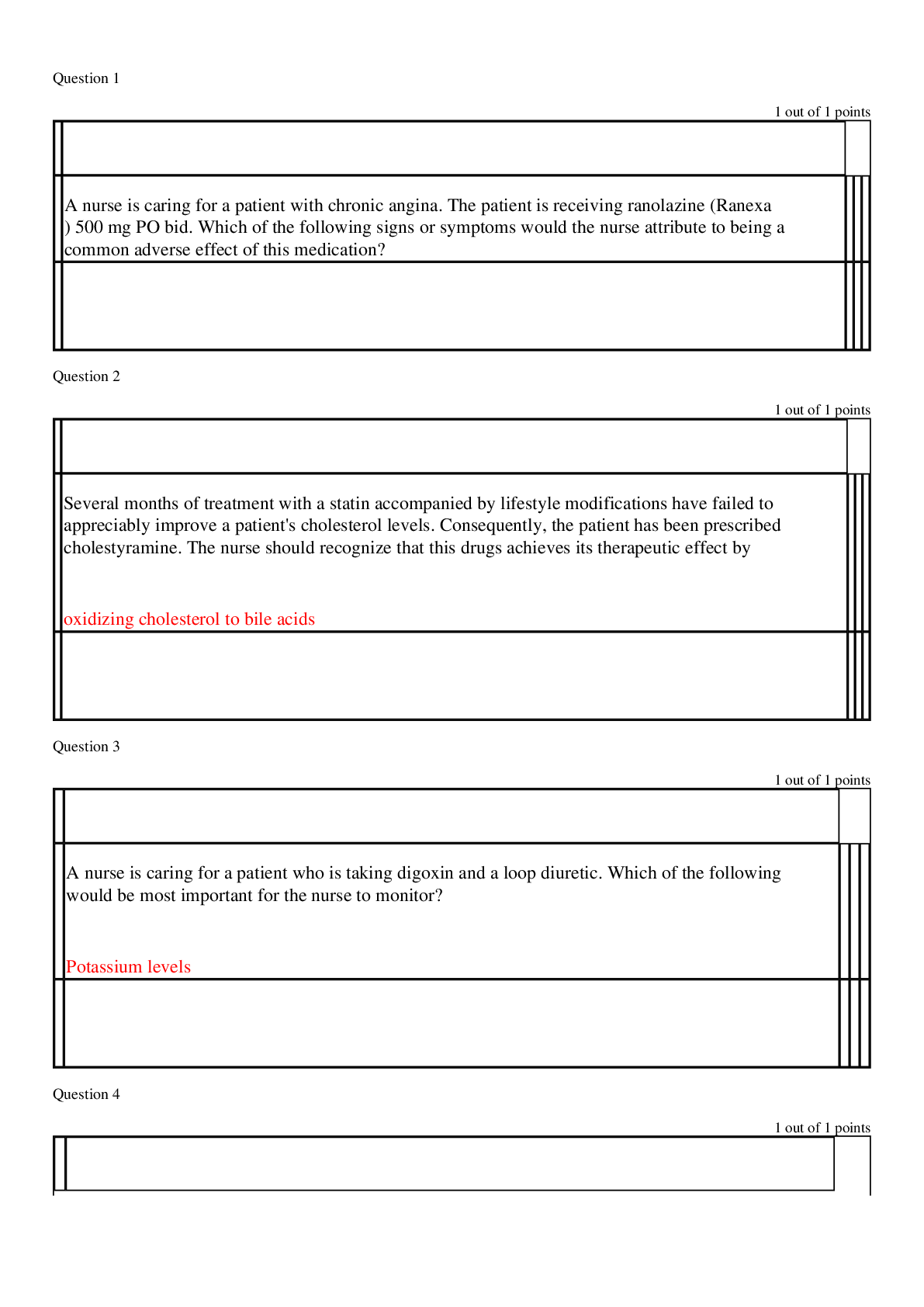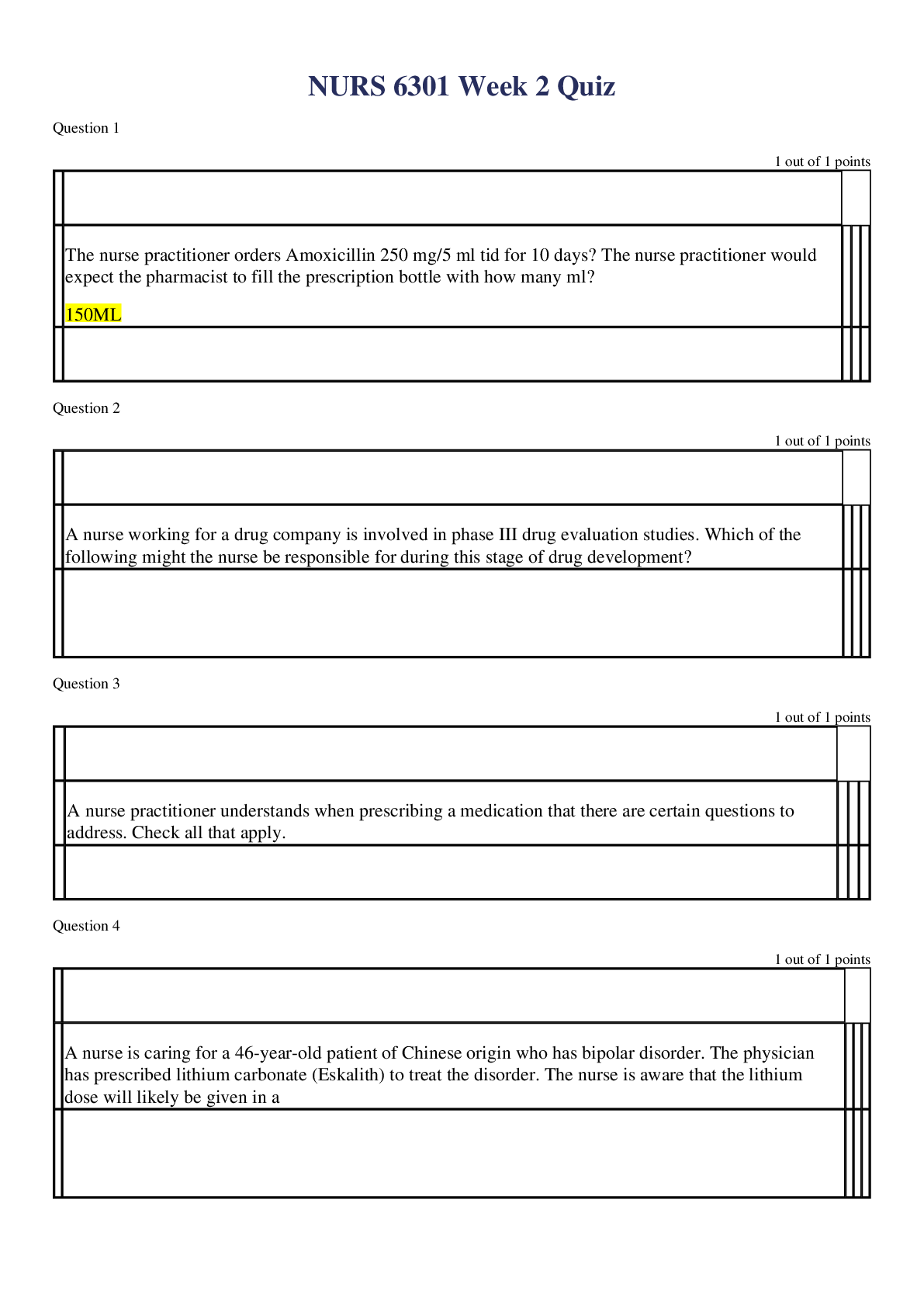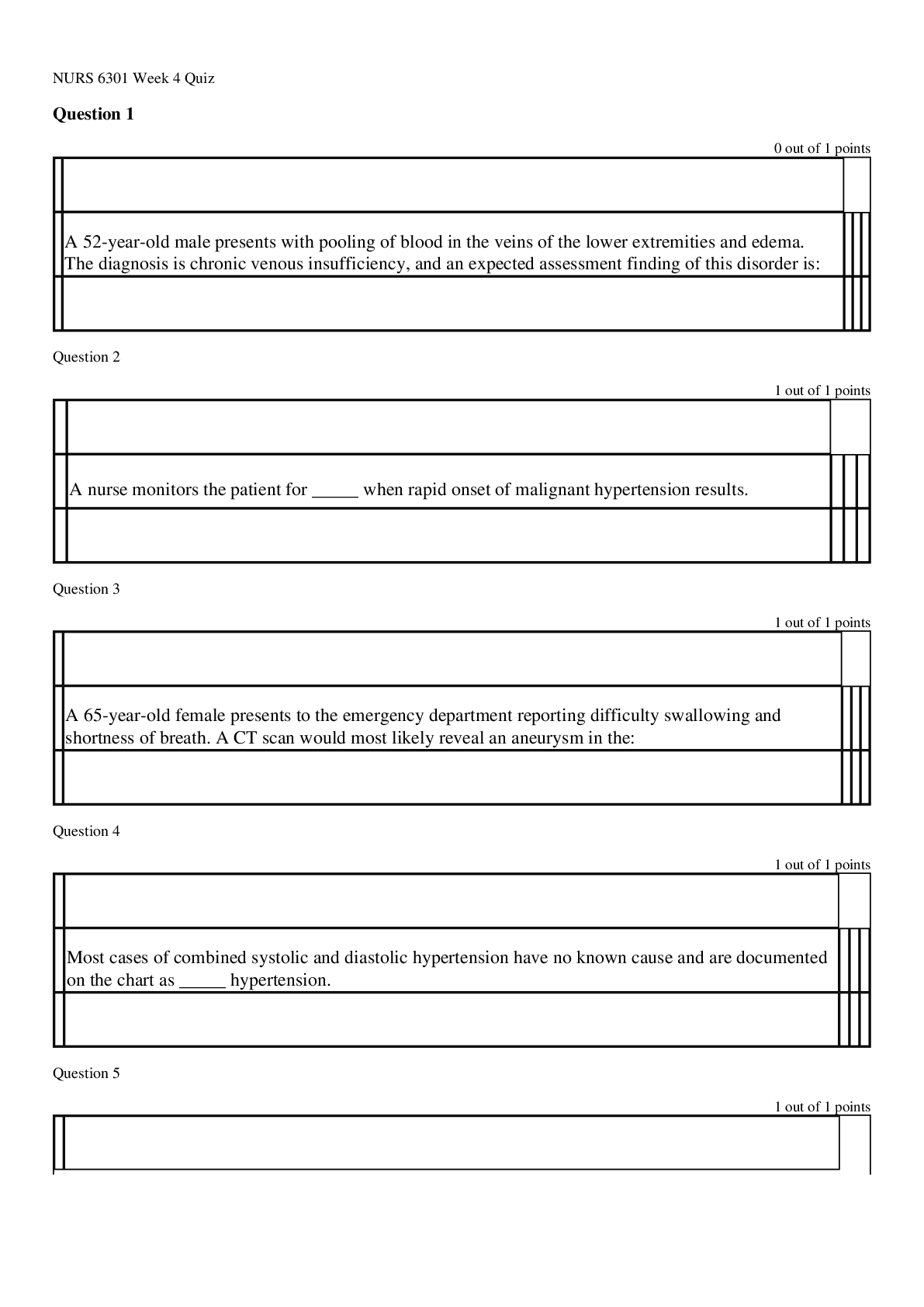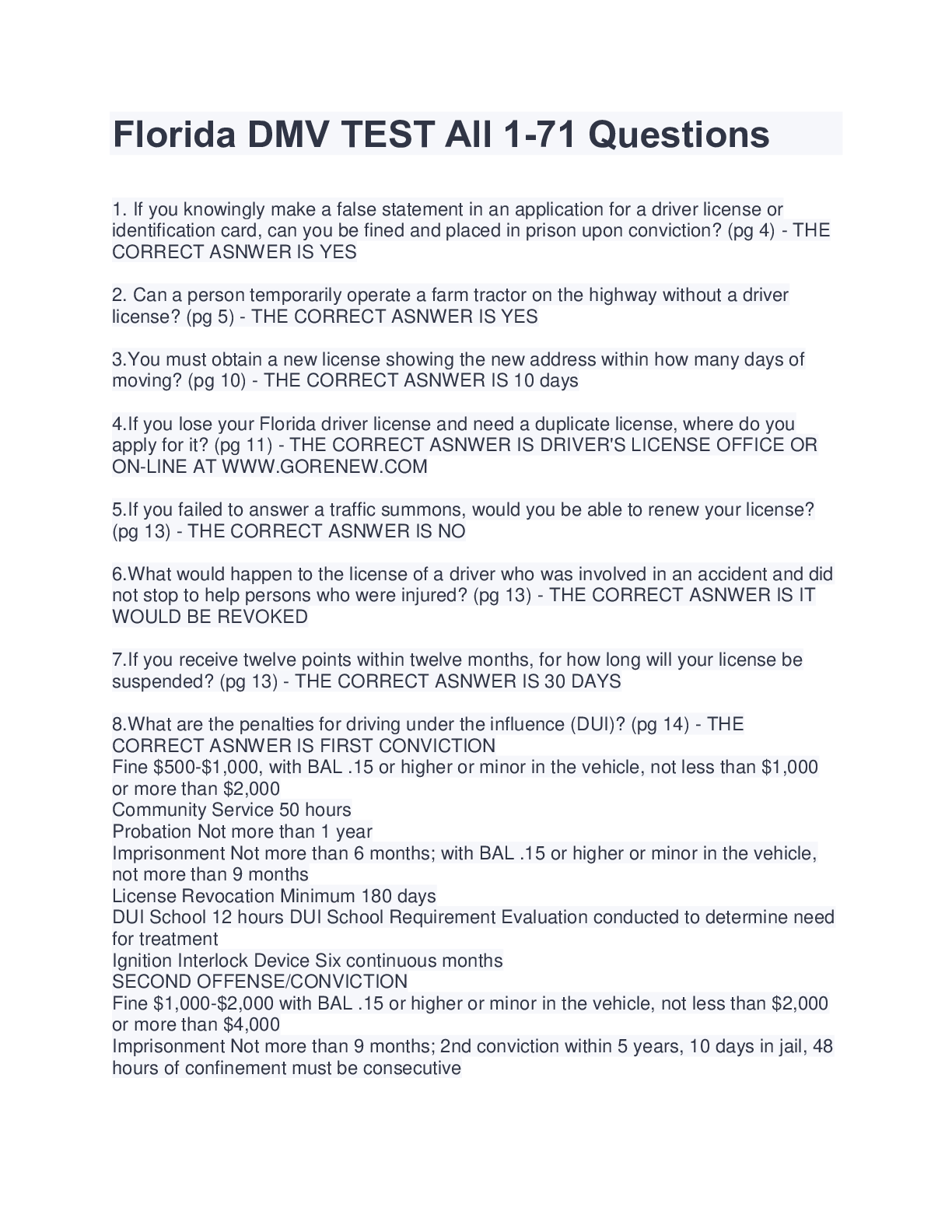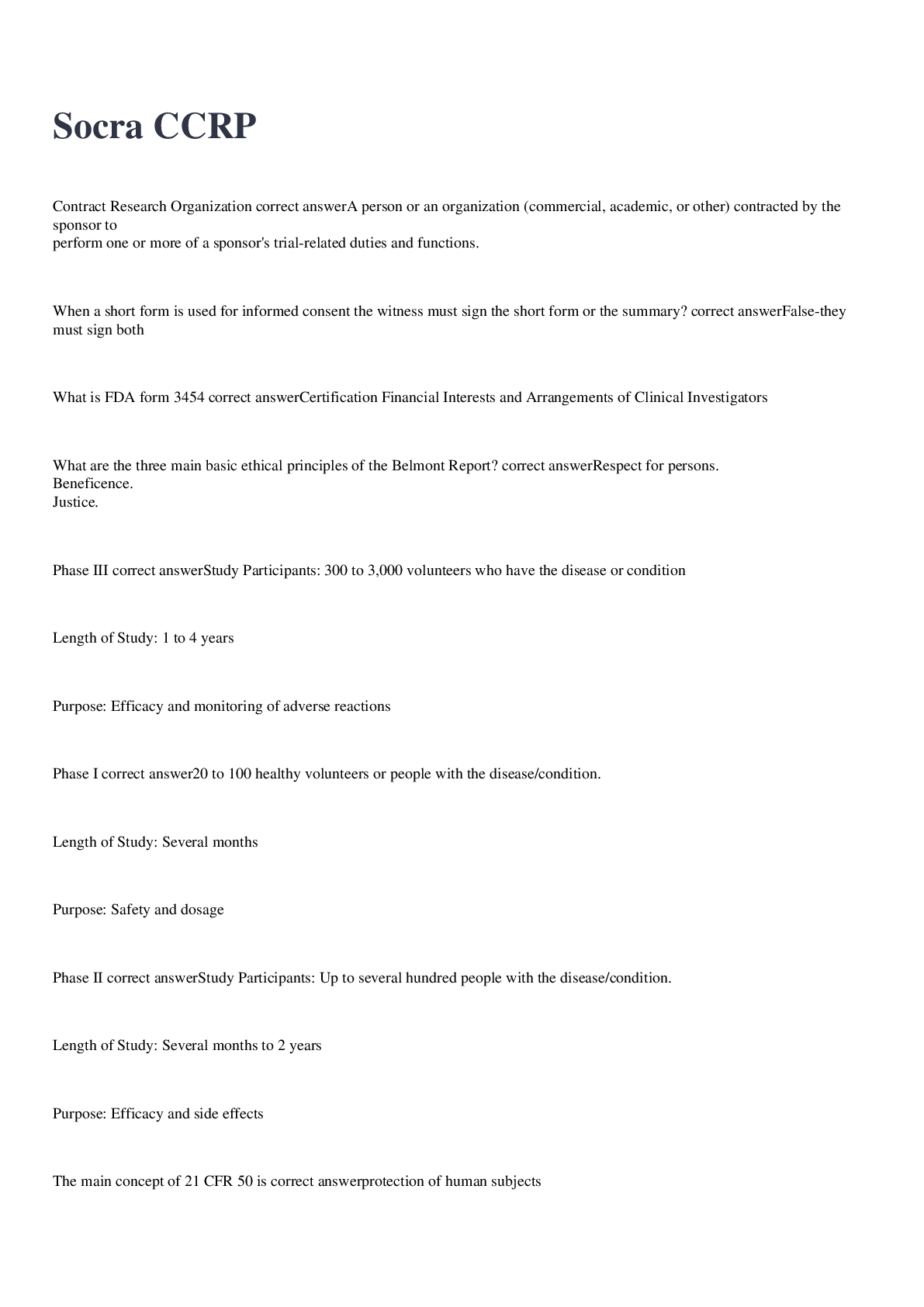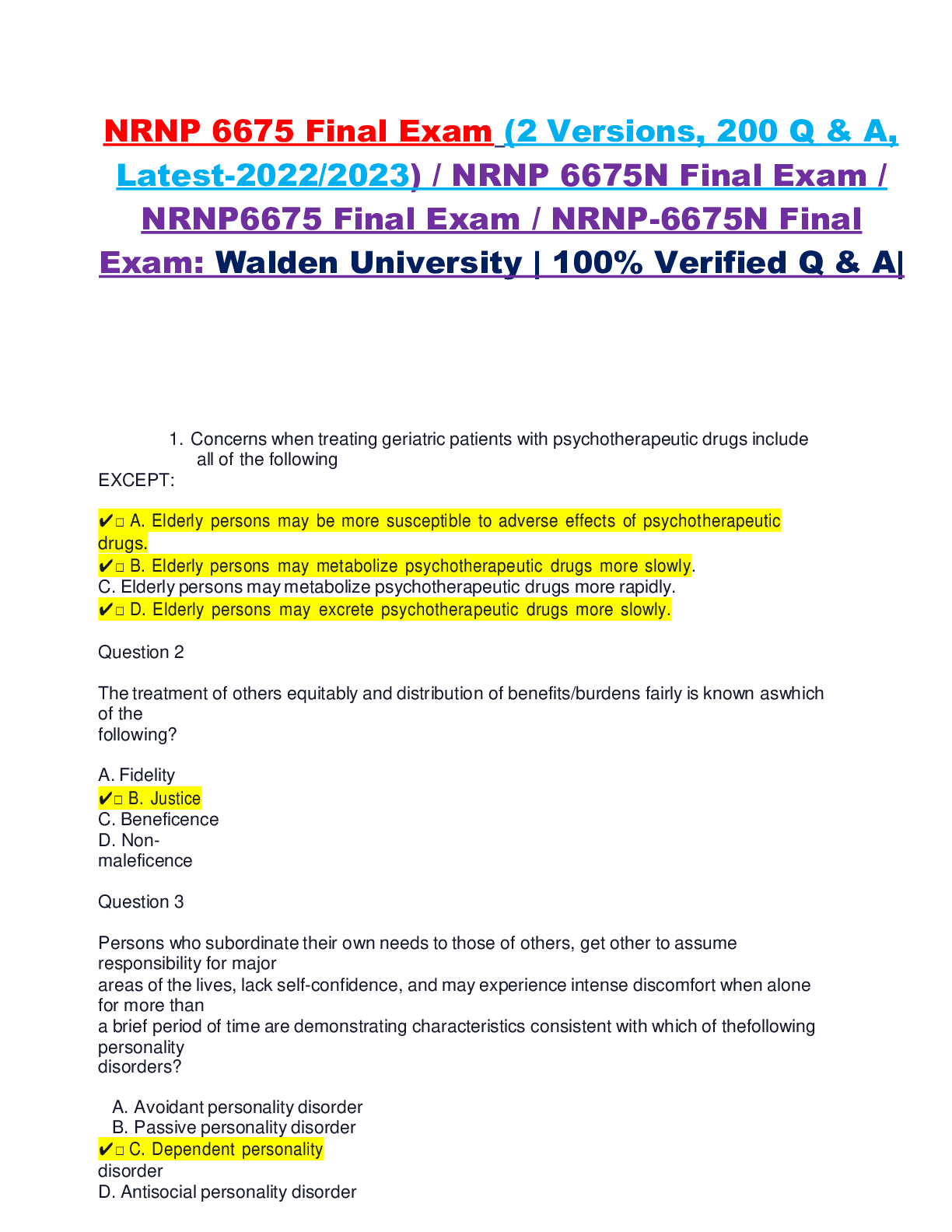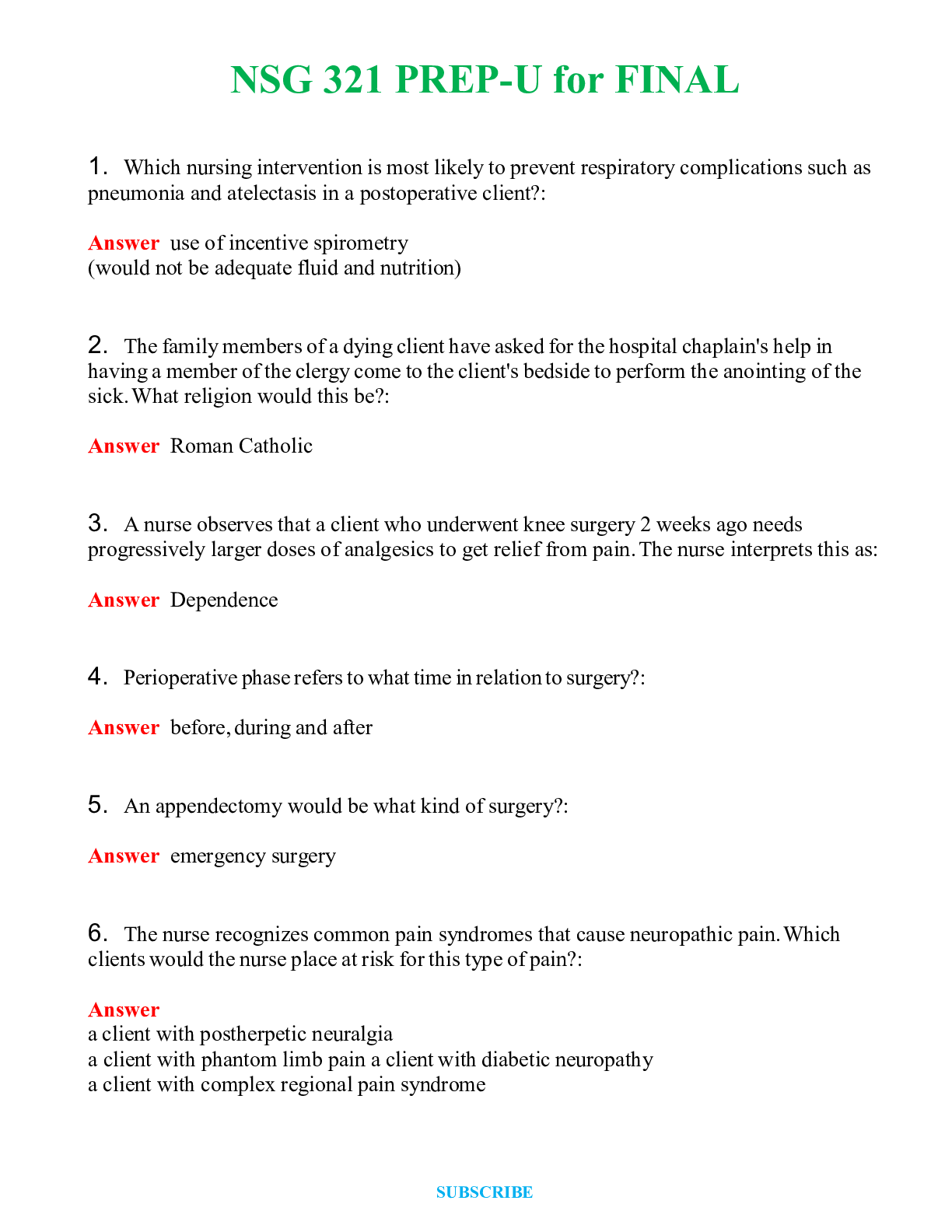NSG 6020 W7 Knowledge Check_SOUTH UNIVERSITY:Download To Get An A
Document Content and Description Below
Week 7 Quiz 1. Bartholin’s gland infection Large, red, tense swelling seen to left introitus & on palpation of the mass causes pain. Usually caused by trauma, gonocci, anaerobes like bacterioides... & peptostreptococci & C. trachomatitis. Acutely the gland appears as a tense, hot, very tender abscess. Look for pus emerging from the duct or erythema around the duct opening. 2. Candida Vaginitis Visualization of the vulva shows a thick, white, & curdy, may be thin but typically thick, not as profuse as in trichomonal infection, not malodorous. Discharge, pH 4.1 & the KOH whiff test is negative with no unusual smell. Wet prep shows budding hyphae. Candida albicans, a yeast (normal overgrowth of vaginal flora) many factors predispose, including antibiotic therapy. Pruritus; vaginal soreness; pain on urination from skin inflammation; dyspareunia. The vulva & even the surrounding skin are often inflamed & sometimes swollen to a variable extent. The vaginal mucosa is often reddened, with white tenacious patches of discharge; the mucosa may bleed when the patches are scraped off. In mild cases the mucosa looks normal. Scan potassium hydroxide (KOH) preparation for the blanching hyphae of candida. 3. Bacterial Vaginitis Caused by bacterial overgrowth from anaerobic bacteria; often transmitted sexually. There may be a gray or white, thin, homogenous, malodorous; coats the vaginal walls; usually profuse, may be minimal. Unpleasant fishy or musty genital odor; reported to occur after intercourse. The vulva & vaginal mucosa usually appear normal. Scan saline wet mount for CLUE CELLS (epithelial cells with stippled borders) sniff for fishy odor after applying KOH (whiff test) test the vaginal secretions for PH > 4.5 4. Trichomonal Vaginitis A protozoa; often but nor always acquired sexually. Yellowish, green, gray, possibly frothy. Often profuse & pooled in vaginal fornix; may be malodorous. Pruritis (not as severe as w/ candida); painful urination from skin inflammation or urethritis or dyspareunia. Vestibule & labia minora may be erythematous; the vaginal mucosa may be diffusely reddened with small granular spots of petechiae in the posterior fornix. Mild cases the mucosa may look normal. Scan wet mount for trichmonads. 5. Bleeding between periods is known as metrorrhagia. 6. Epidermoid cyst 2mm to 3mm round yellow nodules on the left labia. Palpation they are nontender & quite firm. C/o growths in her vulvar area. 7. Breast cancer Nipple discharge in Breast CA is usually unilateral & can be clear or bloody. Although a breast mass is not palpated, in this case a fixed lymph node is palpated. Other forms of Breast CA can present as a chronic rash on the breast. 8. Benign breast abnormality Nipple discharge in benign breast abnormalities tends to be clear & unilateral. The discharge is usually not spontaneous. This patient needs to be told to stop compressing her nipple. If the problem still persists after the patient has stopped compressing the nipple, further workup is warranted. 9. Nipple retraction A retracted nipple is flattened or pulled inward or toward the medial, lateral, anterior, or posterior side of the breast. The surrounding skin can be thickened. This is a relatively late finding in breast cancer. 10. Acanthosis nigricans Acanthosis nigricans can be associated with an internal malignancy, but in most cases it is a benign dermatologic condition associated with polycystic ovarian syndrome, consisting of acne, hirsutism, obesity, irregular periods, infertility, ovarian cysts, and early onset type 2 diabetes. It is also known to correlate with insulin resistance. 11. Imbalance of hormones of puberty Mildly overweight and enlarged breast tissue 12. Paget's disease This uncommon form of breast cancer starts as an eczema-like, scaly skin change around the areola. The lesion may weep, crust, or erode. It can be associated with an underlying mass, but the skin change can also be found alone. Any eczema-like area around the nipple that does not respond to topical treatment needs to be evaluated for breast cancer. 13. Pap smear is a relatively ineffective screening method. CORRECT It commonly resolves spontaneously in one to two years. 14. HPV What? It is the second most common STI in the United States. INCORRECT HPV infections cause a small but important number of cervical cancers. 15. Secondary amenorrhea Birth 6 months ago & breast-feeding no period since birth 16. Psychosocial reasons may cause this condition. Married unable to have intercourse due to vaginismus 17. Self-Breast Exam (SBE) It has been shown to reduce mortality from breast cancer. It is recommended unanimously by organizations making screening recommendations. CORRECT a high proportion of breast masses are detected by breast self-examination. The undue fear caused by finding a mass justifies omitting instruction in breast self-examination. 18. One breast larger than the other. (Benign breast examination) 19. Chlamydia Diagnosed with gonorrhea should also be treated from the following infection. 20. Tubal pregnancy 21. How to properly perform PapSmear * Warm the speculum Palpable Masses of the Breast Age Common Lesion Characteristics 15–25 Fibroadenoma Usually smooth, rubbery, round, mobile, nontender 25–50 Cysts Usually soft to firm, round, mobile; often tender Fibrocystic changes Nodular, ropelike Cancer Irregular, firm, may be mobile or fixed to surrounding tissue Over 50 Cancer until proven As above otherwise Preg/Lact. Lactating adenomas, As above cysts, mastitis, & cancer Calculators for Assessing Risk of Breast Cancer ● Gail model; updated for African American women: http://www.cancer.gov/bcrisktool/ ● BRCAPRO model for probability of BRCA 1 and BRCA2 mutation: http://bcb.dfci.harvard.edu/bayesmendel/software.php ● Centers for Disease Control and Prevention Division of Cancer Prevention and Control—Know BRCA Tool: https://www.knowbrca.org/ ● Centers for Disease Control and Prevention Division of Cancer Prevention and Control—Help ● Women Know: BRCA: https://www.knowbrca.org/Provider Breast Self-Examination Tutorial ● http://ww5.komen.org/breast-cancer/breatselfawareness.html National Guidelines for Breast Cancer Screening ● National Guideline Clearinghouse: http://www.guidelines.gov (enter “breast cancer”) Randomized Clinical Trials of New Modalities in Breast Cancer Screening ● National Institutes of Health: https://clinicaltrials.gov/ [Show More]
Last updated: 1 year ago
Preview 1 out of 3 pages
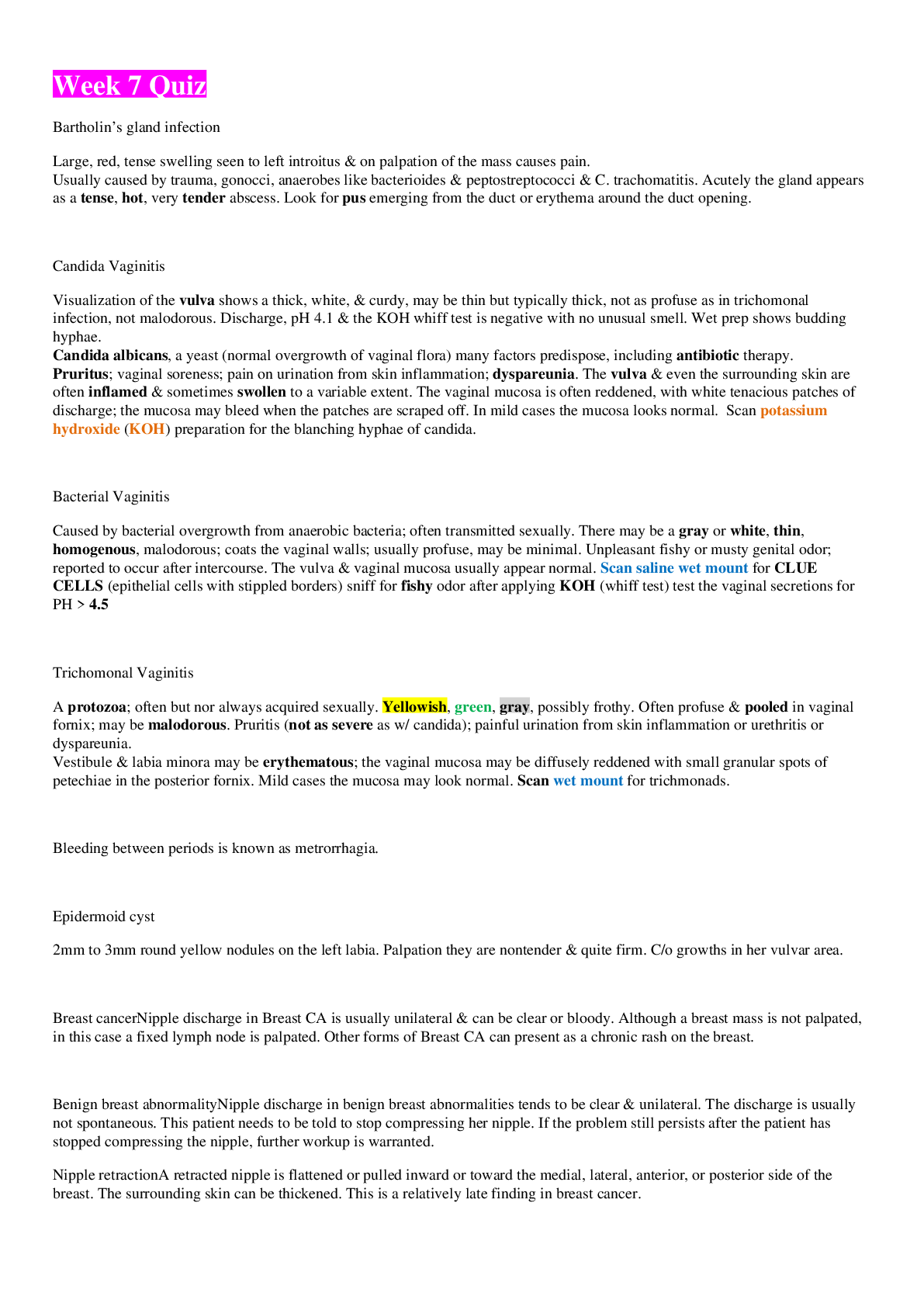
Reviews( 0 )
Document information
Connected school, study & course
About the document
Uploaded On
May 06, 2020
Number of pages
3
Written in
Additional information
This document has been written for:
Uploaded
May 06, 2020
Downloads
0
Views
59

